Jellyfish stings in Hawaii are on the rise. Earlier this year, there was a mass jellyfish sting event that occurred in Waikiki in which more than 150 people were stung on just one day. Jellyfish stings have been on the increase over the past half-century.
Any 2024 Hawaiian getaway can be a sting-free breeze when using the 2024 Hawaii Jellyfish Warning calendar. In addition to providing helpful means for planning your trip, we’ve included the latest insights from ongoing jellyfish research. We hope this serves as a valuable resource when planning your Hawaii vacation dates.
These mesmerizing sea creatures are composed of 95% water and wield dangerous, needle-like venomous stingers on their tentacles. The increase in the jellyfish population in Hawaii is noticeable and has been ongoing since the 1980s. Various theories suggest that it’s due to either shipwrecks that are now in essence artificial reefs for the jellyfish, or due to a decline in the population of certain fish and turtles.
In any event, the calendar below outlines the appearance of box, moon, and lagoon jellyfish types across the Hawaiian islands. Understanding the causes behind box jellyfish invasions is essential, as recent research from UH Manoa reveals their unique cyclic lunar spawning migration behavior.
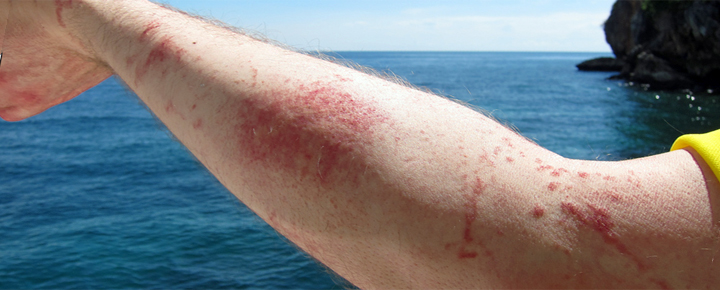

To avoid jellyfish stings, awareness is key:
1. Be on alert at south-facing beaches about eight days after a full moon at Ala Moana Beach Park, Hanauma Bay, Waikiki, and the Waianae Coast on Oahu, and Poipu Beach and Salt Pond Beach on Kauai. Maui and the Big Island may also experience jellyfish on south-facing beaches.
2. Timing is a key indicator. While jellyfish become prominent eight days after the full moon, the issue persists for up to three days. Seek advice from lifeguards if on a potentially impacted beach.
3. Sting treatments abound for Pacific jellies. In case of a sting, some preferred remedies mentioned include rinsing the affected area with vinegar or urine, using tweezers to remove tentacles, and considering heat instead of ice for pain relief, as well as pain medicine like ibuprofen (Advil) and acetaminophen (Tylenol).
There are a variety of topical treatments as well as systemic antihistamines that may help. Consult recent and ongoing research from the University of Hawaii about developing topical creams, steroid creams, and other treatments. These also include protective wear called stinger suits. Those are often found in Australia.
When it comes to jellyfish sting treatments, caution is advised, as some practices can actually exacerbate the issue. Vinegar rinse, fresh water, rubbing alcohol, ammonia, baking soda, careful jellyfish tentacle removal, and heat application are often recommended.
Seek medical help for life-threatening reactions, including severe allergic reaction, swelling, hives, severe headache, nausea, vomiting, weakness, fever, throat problems involving swallowing, cough, trouble breathing, muscle spasms, stomach pain, other signs of anaphylaxis, etc., and infections. Please share your thoughts on stings, symptoms, and effective treatments for the venom in the comments.
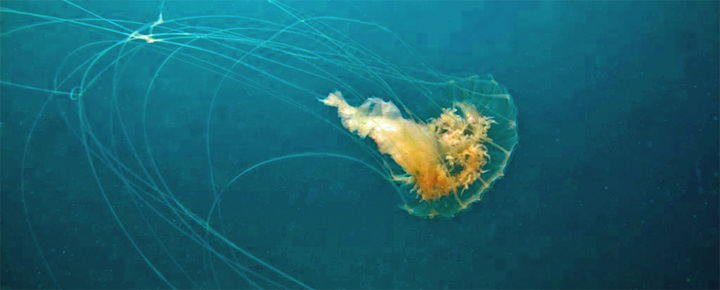

The 2024 Hawaii Jellyfish Sting Warning Dates are as follows:
- January 3, 4, and 5, 2024
- February 2, 3, and 4, 2024
- March 3, 4, and 5, 2024
- April 1, 2 and 3, 2024
- May 1, 2, 3 and 31, 2024
- June 1, 2, 29 and 30, 2024
- July 1, 29 and 31, 2024
- August 27, 28 and 29, 2024
- September 25, 26 and 27, 2024
- October 25, 26 and 27, 2024
- November 23, 24 and 25, 2024
- December 22, 23 and 24, 2024
Stay informed, enjoy your Hawaii vacation while keeping an eye on the 2024 jellyfish calendar, and have a safe and memorable experience! Aloha.
Get Breaking Hawaii Travel News
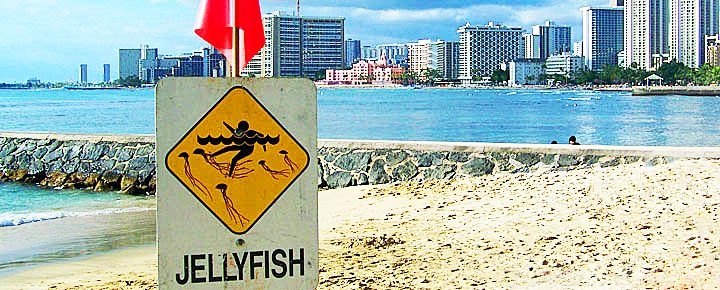


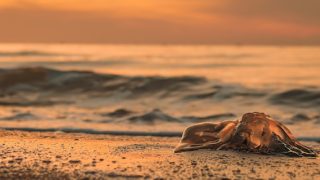
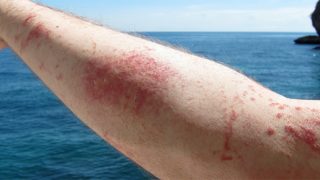

Was stung today at hideaway beach. 80/27/2024
Thanks BOH editors, great advisory and reminder for us all!
Only once have I forgotten to check the jellyfish calendar for my trip to Oahu or Maui. This August, I was sitting on the beach viewing my first sunset right after my arrival and a little girl swimming right in front of me was stung several times but neither she, her sisters, or her mother knew what happened. It was so awful for her! I let them know the likely culprit, as did others, and we all offered care options. No need to suffer on vacation. Always be curious and explore the unique things to be wary of at any destination on your travel list.
Hi Mary.
Thanks for that! When you live here it is ingrained,and even still we sometimes forget.
Aloha.
They sting people on the west side of Maui too as I well know and periodically, where I got stung on my forehead, it still itches and burns! The rule of thumb that I learned decades ago is that 8 to 10 days after the full moon is when to avoid being in the water. And quite frankly, some of the jellies are so small that you will never see them until you get stung.
My ex got stung down the top of her bathing suit and was miserable for over a week where it hit her.